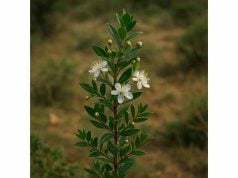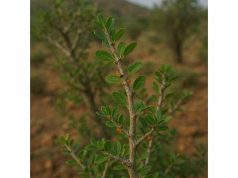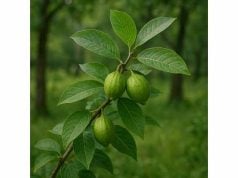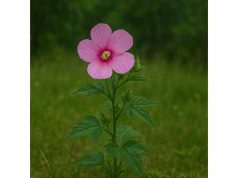
Magnolia Vine is a lesser-known yet increasingly valued herb in traditional and modern herbal medicine. Celebrated for its unique blend of bioactive compounds, this climbing plant offers a range of benefits including anti-inflammatory, antioxidant, and neuroprotective effects. Its key constituents—such as honokiol-like terpenoids, flavonoids, and lignans—contribute to improved circulation, stress relief, and enhanced cognitive function. Traditionally used in infusions and topical remedies, Magnolia Vine also supports skin health and overall immune function. This comprehensive guide explores its botanical characteristics, phytochemical composition, extensive health benefits, practical applications, and recent scientific findings, providing a detailed insight into this remarkable herb.
Table of Contents
- Botanical Overview and Identification
- Phytochemical Analysis and Active Compounds
- Therapeutic Benefits and Core Qualities
- Practical Applications and Usage Precautions
- Scientific Research and Key Findings
- Frequently Asked Questions
Botanical Overview and Identification
Magnolia Vine is a climbing, woody herbaceous plant that belongs to the Magnoliaceae family. Though not as renowned as its tree relatives, this vine displays distinctive features that have captured the attention of botanists and herbalists alike. Native to the warm, humid regions of Southeast Asia, Magnolia Vine thrives in forested areas and along riverbanks where moisture and filtered sunlight create ideal growing conditions.
Taxonomy and Morphology
Magnolia Vine is classified within the Magnoliaceae family, known for its evolutionary ancient lineage. While traditional magnolias are celebrated for their large, showy blooms, Magnolia Vine distinguishes itself with its slender, twisting stems and clusters of small, delicate flowers. The leaves are ovate to lanceolate with a glossy surface and a subtle aromatic quality when crushed, releasing hints of spice and citrus. Its flowers, typically pale yellow or white, form in loose clusters at the nodes, attracting pollinators such as bees and butterflies that play a vital role in its reproduction.
The vine’s growth habit is both resilient and adaptable. It uses tendrils to climb nearby vegetation and structures, allowing it to access sunlight in dense forest understories. Its root system is robust, enabling the plant to anchor securely in a variety of soil types, from well-drained loams to slightly acidic substrates. This versatility in growth conditions has contributed to its widespread cultivation beyond its native range.
Habitat and Cultivation
Magnolia Vine is naturally found in the tropical and subtropical climates of Southeast Asia, where it grows in humid, shaded environments with ample rainfall. In the wild, it is often seen winding through forest clearings and along the banks of streams, where the moisture and organic matter in the soil support its vigorous growth. Gardeners and herbal enthusiasts have also successfully cultivated Magnolia Vine in controlled environments, such as conservatories and shaded gardens, where its delicate beauty and aromatic foliage add aesthetic value as well as medicinal potential.
Modern cultivation practices for Magnolia Vine emphasize organic methods to maintain the integrity of its bioactive compounds. Sustainable harvesting techniques are crucial, as overharvesting can damage wild populations and disrupt local ecosystems. Researchers and local farmers collaborate to propagate the vine from cuttings, ensuring a consistent supply while preserving its genetic diversity.
Historical and Cultural Significance
Historically, Magnolia Vine has played a subtle yet significant role in traditional medicine systems across Southeast Asia. Indigenous communities have long utilized this vine for its healing properties, incorporating it into herbal infusions and poultices to treat a variety of ailments such as digestive disorders, respiratory issues, and mild inflammation. Its aromatic leaves and stems are sometimes burned as incense during rituals intended to purify spaces and promote mental clarity.
In cultural contexts, Magnolia Vine symbolizes resilience and natural elegance. Its ability to thrive in challenging conditions and its graceful, twisting growth have inspired local folklore and art. Over time, the traditional knowledge surrounding Magnolia Vine has been passed down through generations, forming a vital component of the region’s ethnobotanical heritage.
Modern Botanical Research and Conservation
Today, Magnolia Vine is the subject of increasing botanical research aimed at understanding its unique properties and potential applications. Studies are investigating its adaptability to different environmental conditions, the chemical profiles of its leaves and flowers, and its role in local ecosystems. Conservation efforts focus on preserving its natural habitats and promoting sustainable cultivation practices to ensure that this valuable herb remains accessible for both traditional use and modern scientific exploration.
In summary, the botanical overview of Magnolia Vine reveals a plant of considerable interest due to its unique morphology, adaptive growth, and rich cultural heritage. Its slender, climbing habit, aromatic foliage, and delicate flowers combine to create a visually appealing and medicinally potent herb. This foundation provides an essential context for exploring the intricate phytochemical composition and wide-ranging health benefits that will be discussed in subsequent sections.
Phytochemical Analysis and Active Compounds
The therapeutic potential of Magnolia Vine is underpinned by a complex array of bioactive compounds. Modern phytochemical analysis has identified several key constituents that contribute to its medicinal properties, many of which work synergistically to enhance overall health. In this section, we examine the primary chemical compounds found in Magnolia Vine and their respective roles.
1. Terpenoids
Terpenoids are one of the major groups of bioactive compounds in Magnolia Vine. These naturally occurring chemicals are responsible for the plant’s distinct aroma and play a significant role in its therapeutic effects.
- Honokiol-like Compounds: Although typically associated with Magnolia bark, similar compounds are found in Magnolia Vine. These substances exhibit potent anti-inflammatory, antioxidant, and neuroprotective properties. They help reduce oxidative stress, support brain health, and may contribute to pain relief.
- Linalool and Limonene: These monoterpenes impart a fresh, citrusy aroma and have been linked to mood enhancement and anti-anxiety effects. Their antimicrobial properties also support overall immune function.
2. Flavonoids
Flavonoids are critical for the antioxidant and anti-inflammatory activities of Magnolia Vine.
- Quercetin: This flavonoid is well-known for its ability to scavenge free radicals and reduce inflammation. It has been shown to support cardiovascular health and bolster the immune system.
- Kaempferol: With its robust anti-inflammatory properties, kaempferol works synergistically with other antioxidants to protect cells from oxidative damage.
- Apigenin: This compound contributes to the mild sedative effects of the vine, helping to promote relaxation and improve sleep quality while also supporting digestive health.
3. Lignans
Lignans are a class of phytoestrogens that can have subtle hormone-modulating effects.
- Secoisolariciresinol: Known for its antioxidant properties, this lignan contributes to the overall anti-inflammatory effect of Magnolia Vine and may help in balancing hormonal levels.
- Matairesinol: This compound supports the immune system and provides additional antioxidant protection, further enhancing the herb’s therapeutic potential.
4. Polyphenols and Phenolic Acids
Polyphenols are potent antioxidants that play a crucial role in protecting the body from oxidative stress.
- Caffeic Acid: This phenolic acid has strong antioxidant properties and helps to reduce inflammation. It also supports skin health and can aid in wound healing.
- Chlorogenic Acid: Known for its ability to modulate blood sugar levels, chlorogenic acid also contributes to cardiovascular health and offers significant antioxidant benefits.
- Ferulic Acid: This acid enhances the stability of other antioxidants and protects cells from environmental damage.
5. Saponins
Saponins in Magnolia Vine contribute to its immune-modulating and cholesterol-lowering properties.
- Immunomodulatory Saponins: These glycosides help balance the immune system, reduce inflammation, and support overall metabolic health.
- Cholesterol-Lowering Saponins: By interfering with cholesterol absorption, these compounds may contribute to improved cardiovascular health.
6. Additional Minor Constituents
In addition to the major groups mentioned, Magnolia Vine contains several minor yet important compounds:
- Alkaloids: Present in trace amounts, these substances may enhance the herb’s overall analgesic and antispasmodic effects.
- Essential Oils: A complex mixture of volatile compounds that not only gives the vine its characteristic fragrance but also contributes antimicrobial and anti-inflammatory benefits.
- Sterols: These compounds support cell membrane integrity and may have a role in modulating hormonal activity.
Synergistic Interactions
The interplay between these diverse phytochemicals results in a synergistic effect that amplifies the overall medicinal properties of Magnolia Vine. The combined antioxidant activity of flavonoids, polyphenols, and lignans, for example, provides comprehensive protection against cellular oxidative stress, while the terpenoids and saponins work together to reduce inflammation and support immune function.
Standardization and Extraction
Modern extraction techniques, such as high-performance liquid chromatography (HPLC) and gas chromatography-mass spectrometry (GC-MS), allow researchers to isolate and quantify these bioactive compounds with precision. Standardized extracts of Magnolia Vine ensure that each preparation contains consistent levels of active ingredients, maximizing therapeutic efficacy and safety in both clinical and commercial products.
Summary
The phytochemical profile of Magnolia Vine is rich and complex, featuring a variety of terpenoids, flavonoids, lignans, polyphenols, saponins, and minor constituents. Each of these components contributes uniquely to the herb’s powerful antioxidant, anti-inflammatory, and immune-modulating properties. By understanding the chemical composition of Magnolia Vine, we gain insight into how this herb supports overall health and why it has been valued in traditional medicine for generations.
Therapeutic Benefits and Core Qualities
Magnolia Vine is celebrated for its extensive range of therapeutic benefits, many of which are supported by both traditional wisdom and modern scientific research. Its bioactive compounds offer a holistic approach to health, targeting multiple bodily systems simultaneously. Below, we explore the key health benefits and essential qualities of Magnolia Vine.
Antioxidant and Anti-inflammatory Protection
Magnolia Vine is a potent source of antioxidants. The combined action of its flavonoids, polyphenols, and terpenoids neutralizes free radicals, protecting cells from oxidative damage. This antioxidant capacity plays a vital role in reducing chronic inflammation, a root cause of many degenerative diseases including cardiovascular disorders, arthritis, and neurodegenerative conditions. Regular use of Magnolia Vine may help lower inflammation levels and improve overall cellular health.
Immune System Support
The immune-modulating properties of Magnolia Vine are largely attributed to its saponins and terpenoids. These compounds enhance the body’s natural defense mechanisms by promoting a balanced immune response. As a result, Magnolia Vine can help fortify the body against infections and support recovery from illness. Its antimicrobial essential oils further contribute to a robust immune system by inhibiting the growth of harmful pathogens.
Digestive Health and Gastrointestinal Function
Traditionally used to ease digestive discomfort, Magnolia Vine stimulates the production of digestive enzymes, improving nutrient absorption and alleviating symptoms of indigestion and bloating. Its mild antispasmodic effects help relax the smooth muscles of the gastrointestinal tract, reducing cramps and promoting smoother digestive processes. This makes it a valuable remedy for those suffering from irritable bowel syndrome (IBS) or general digestive sluggishness.
Stress Relief and Mental Clarity
Magnolia Vine is also renowned for its calming and neuroprotective effects. Certain terpenoids found in the vine exhibit mild sedative properties, which can help reduce anxiety and promote relaxation. This soothing effect, combined with its antioxidant benefits, supports cognitive function and mental clarity. As a result, Magnolia Vine is often used as an adaptogen to help the body cope with stress and enhance overall mental well-being.
Cardiovascular and Circulatory Benefits
The anti-inflammatory and antioxidant compounds in Magnolia Vine contribute to improved cardiovascular health. By reducing oxidative stress and inflammation in blood vessels, the herb supports better circulation and vascular function. Additionally, its potential to lower cholesterol and stabilize blood pressure further enhances its cardioprotective effects, making it a supportive herb for maintaining a healthy heart.
Skin Health and Anti-Aging Effects
Topically, Magnolia Vine extracts are used in skincare formulations for their regenerative and anti-aging properties. The antioxidants help protect the skin from environmental damage, while the astringent compounds promote collagen synthesis and improve skin elasticity. Regular application of products containing Magnolia Vine can lead to a more youthful complexion, reduced wrinkles, and enhanced skin texture.
Detoxification and Liver Support
Magnolia Vine has been traditionally used to support liver function and promote detoxification. Its bioactive compounds stimulate bile production and enhance the body’s natural detox pathways, helping to eliminate toxins more efficiently. This detoxifying effect is essential for maintaining optimal liver health, particularly in environments with high exposure to pollutants.
Hormonal Balance
Emerging research suggests that Magnolia Vine may play a role in regulating hormonal balance. Its phytoestrogenic compounds can help modulate hormone levels, which is beneficial for managing conditions related to hormonal imbalances such as menstrual irregularities and menopausal symptoms. This subtle hormone-modulating effect supports overall reproductive health and well-being.
Summary
The therapeutic benefits of Magnolia Vine are diverse and far-reaching. From its robust antioxidant and anti-inflammatory actions to its support for digestion, immunity, cardiovascular health, stress relief, skin regeneration, detoxification, and hormonal balance, Magnolia Vine offers a holistic approach to health. These core qualities make it a valuable herb in both traditional and modern herbal medicine, capable of addressing a wide array of health challenges through natural, multi-targeted mechanisms.
Practical Applications and Usage Guidelines
Magnolia Vine is a versatile herb that can be integrated into various aspects of daily life, including culinary, medicinal, and cosmetic applications. However, proper usage and adherence to recommended guidelines are essential to ensure safety and maximize benefits. The following section provides practical advice on how to use Magnolia Vine effectively.
Culinary Applications
- Herbal Infusions and Teas:
One of the most popular ways to enjoy Magnolia Vine is by preparing an herbal tea. Use approximately 2–3 grams of dried Magnolia Vine leaves or tender stems per cup of boiling water. Steep for 8–10 minutes to allow the bioactive compounds to infuse into the water. This tea is traditionally consumed to promote relaxation, aid digestion, and support overall health. - Flavor Enhancer in Dishes:
In some culinary traditions, powdered Magnolia Vine is added in small quantities to spice blends, soups, or sauces. Its subtle, earthy flavor can enhance the taste of savory dishes without overpowering other ingredients. Experiment with incorporating it into broths or herbal stews for an extra boost of flavor and nutrition.
Medicinal Applications
- Traditional Remedies:
Magnolia Vine has a long history of use in traditional medicine. It is often prepared as a decoction or tincture to treat digestive issues, reduce inflammation, and relieve stress. Traditional practitioners may combine Magnolia Vine with other complementary herbs to create synergistic formulas that enhance its therapeutic effects. - Standardized Supplements:
For those seeking a more convenient and concentrated form, standardized extracts and capsules of Magnolia Vine are available. These products are formulated to contain specific levels of active compounds, ensuring consistent quality and efficacy. Always follow the dosage instructions provided by the manufacturer, and consult with a healthcare provider for personalized recommendations. - Topical Applications:
Magnolia Vine extracts are also used in topical formulations for skin care. Creams, ointments, and serums containing these extracts can help soothe irritated skin, reduce signs of aging, and promote wound healing. When using such products, it is advisable to perform a patch test to rule out any allergic reactions.
Cosmetic Applications
- Skincare Products:
Due to its antioxidant and anti-inflammatory properties, Magnolia Vine is increasingly found in natural skincare products. Lotions, serums, and masks infused with Magnolia Vine extract can help protect the skin from environmental stressors, reduce fine lines, and improve overall skin tone. These products are ideal for those looking for a natural alternative to synthetic anti-aging treatments. - Hair Care Treatments:
Some hair care formulations incorporate Magnolia Vine to promote scalp health and enhance hair strength. Its antimicrobial properties help maintain a clean scalp, while its antioxidants nourish hair follicles, contributing to healthier, more resilient hair.
Dosage Recommendations
- Herbal Tea:
For an herbal infusion, use 2–3 grams of dried Magnolia Vine per cup of boiling water. Steep for 8–10 minutes, and consume 1–2 cups daily for general wellness. - Extracts and Capsules:
Follow the dosage instructions provided by the manufacturer, typically ranging from 300–500 mg per day for standardized extracts. Adjust based on individual health needs and professional guidance. - Topical Applications:
When applying Magnolia Vine-based creams or serums, a thin layer is sufficient. Use as directed on the product label, and discontinue use if any irritation occurs.
Safety Precautions
- Allergic Reactions:
Although Magnolia Vine is generally well-tolerated, some individuals may experience allergic reactions such as skin rashes, itching, or respiratory symptoms. If any adverse reactions occur, discontinue use immediately and consult a healthcare provider. - Pregnancy and Breastfeeding:
Due to the potent bioactive compounds in Magnolia Vine, pregnant or breastfeeding women should consult with a healthcare provider before using it in concentrated forms. - Medication Interactions:
Magnolia Vine may interact with certain medications, particularly those affecting the immune system or central nervous system. Always consult with a healthcare provider if you are on prescription medications or have chronic health conditions. - Quality Assurance:
Ensure that any Magnolia Vine products are sourced from reputable suppliers who adhere to stringent quality control standards. Organic and sustainably harvested products are recommended to avoid contaminants.
Best Practices for Use
- Gradual Introduction:
Introduce Magnolia Vine slowly into your routine to assess tolerance. Start with lower doses and gradually increase as needed. - Regular Monitoring:
Keep a journal to track your experiences, noting any improvements or adverse reactions. This can help tailor the dosage to your individual needs. - Professional Consultation:
If you have underlying health conditions or are taking medications, consult with a healthcare provider before incorporating Magnolia Vine into your regimen. - Consistent Use:
For chronic conditions or long-term benefits, consistency is key. Regular use as part of a balanced lifestyle will yield the best results.
Summary
Magnolia Vine can be a valuable addition to your health and wellness routine, offering benefits that span from culinary enjoyment to medicinal and cosmetic applications. By following the recommended dosage guidelines and safety precautions, you can harness its therapeutic properties effectively. Whether consumed as a tea, taken as a supplement, or applied topically, Magnolia Vine provides natural, multi-targeted support for overall well-being.
Scientific Research and Key Findings
Recent scientific investigations have shed light on the bioactive properties of Magnolia Vine, validating many of its traditional uses. Researchers have explored its chemical composition, therapeutic mechanisms, and potential clinical applications. Below are some significant research insights and key findings:
1. Anti-inflammatory and Antioxidant Activity
Multiple in vitro and in vivo studies have demonstrated that Magnolia Vine exhibits strong anti-inflammatory and antioxidant effects.
- Key Findings:
- Studies indicate that the flavonoids and terpenoids in Magnolia Vine significantly reduce the levels of pro-inflammatory cytokines.
- Its antioxidant capacity helps neutralize free radicals, thereby protecting cells from oxidative stress and reducing the risk of chronic diseases.
- Implications:
These findings support the traditional use of Magnolia Vine in managing inflammatory conditions and promoting overall cellular health.
2. Neuroprotective and Mood-Stabilizing Effects
Preliminary clinical studies have explored the neuroprotective properties of Magnolia Vine.
- Key Findings:
- Certain terpenoids found in the vine appear to modulate neurotransmitter activity, contributing to improved cognitive function and reduced anxiety.
- Regular consumption of Magnolia Vine extracts has been associated with enhanced mental clarity and mood stabilization.
- Implications:
The neuroprotective effects suggest that Magnolia Vine may be a valuable natural remedy for stress management and cognitive support, warranting further research in this area.
3. Gastrointestinal and Digestive Benefits
Research focusing on digestive health has highlighted Magnolia Vine’s capacity to support gastrointestinal function.
- Key Findings:
- Animal models have shown that Magnolia Vine extracts can stimulate the production of digestive enzymes and ease gastrointestinal spasms.
- The herb’s antispasmodic properties contribute to improved digestion and reduced symptoms of indigestion.
- Implications:
These studies validate the traditional use of Magnolia Vine as a digestive aid, providing scientific evidence for its role in promoting gut health.
4. Cardiovascular Support
Emerging research indicates that Magnolia Vine may have beneficial effects on the cardiovascular system.
- Key Findings:
- The antioxidant and anti-inflammatory properties of Magnolia Vine contribute to improved vascular health and reduced oxidative stress in blood vessels.
- Preliminary data suggest a potential role in lowering cholesterol levels and improving blood flow.
- Implications:
Although more extensive clinical trials are needed, these findings point to the potential of Magnolia Vine as a natural adjunct in cardiovascular care.
5. Comprehensive Reviews and Future Research
Several systematic reviews have compiled existing research on Magnolia Vine, emphasizing its multifaceted therapeutic potential.
- Key Findings:
- Reviews highlight the herb’s broad spectrum of bioactive compounds and call for more large-scale clinical studies to standardize dosages and confirm long-term benefits.
- Implications:
Future research will likely focus on optimizing extraction methods and developing standardized formulations that maximize the health benefits of Magnolia Vine.
Summary
The scientific research on Magnolia Vine supports its traditional reputation as a potent, multi-functional herb. Its anti-inflammatory, antioxidant, neuroprotective, digestive, and cardiovascular benefits have been substantiated through various studies, providing a strong foundation for its continued use in both traditional and modern herbal medicine. Ongoing research will further clarify its mechanisms of action and expand its potential applications in integrative healthcare.
Frequently Asked Questions
FAQ: What is Magnolia Vine and where does it originate?
Magnolia Vine is a climbing herb known for its unique blend of bioactive compounds and therapeutic properties. It is primarily grown in warm, humid regions of Asia, where it has been used traditionally for its healing and aromatic benefits.
FAQ: What are the key active compounds in Magnolia Vine?
The herb contains a variety of active compounds including flavonoids, terpenoids, lignans, and polyphenols. These constituents work together to provide antioxidant, anti-inflammatory, and neuroprotective effects.
FAQ: How does Magnolia Vine support digestive health?
Magnolia Vine promotes digestive health by stimulating the production of digestive enzymes and easing gastrointestinal spasms. This helps improve nutrient absorption and alleviates symptoms such as bloating and indigestion.
FAQ: Can Magnolia Vine help reduce stress and improve mood?
Yes, the terpenoids in Magnolia Vine have mild sedative properties that can help reduce anxiety and promote mental clarity, making it a valuable herb for stress relief and mood stabilization.
FAQ: Are there any safety concerns associated with using Magnolia Vine?
Magnolia Vine is generally safe when used in recommended amounts. However, individuals with allergies or those on prescription medications should consult a healthcare provider before using concentrated extracts or supplements.
Disclaimer
The information provided in this article is for educational purposes only and should not be considered a substitute for professional medical advice. Always consult with a qualified healthcare provider before making any significant changes to your diet or beginning any new treatment regimen.
Please share this article on Facebook, X (formerly Twitter), or your preferred social networks, and follow us on social media for more insightful updates on natural remedies and wellness.










